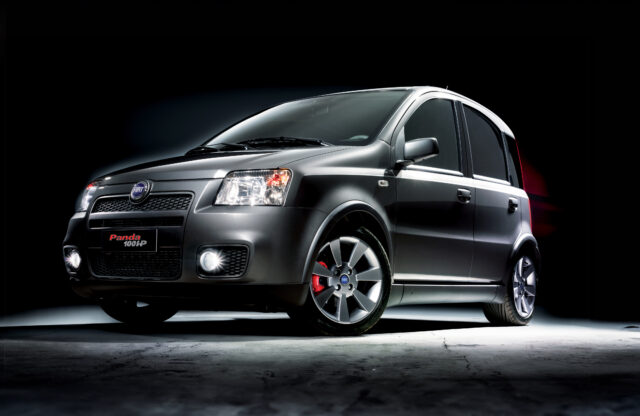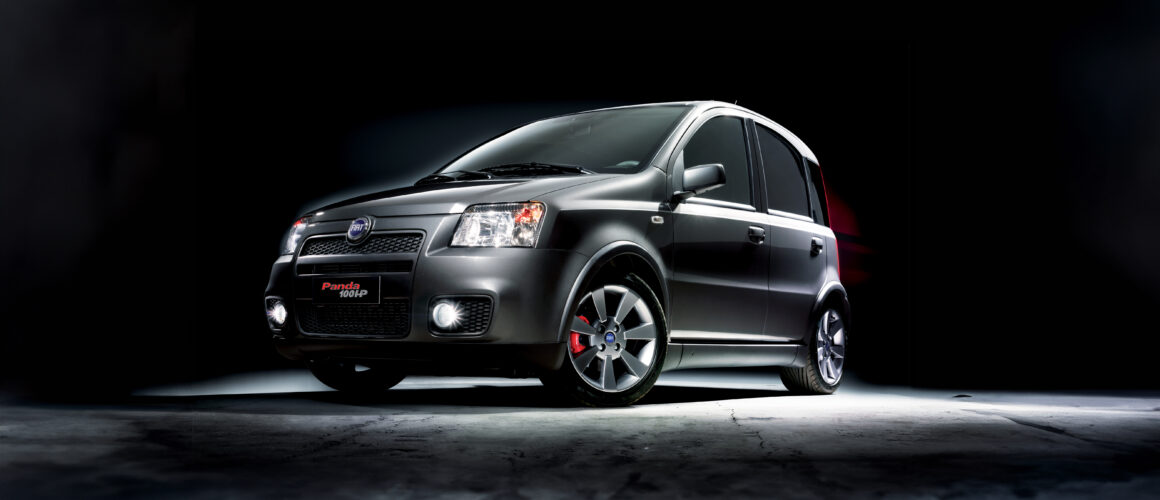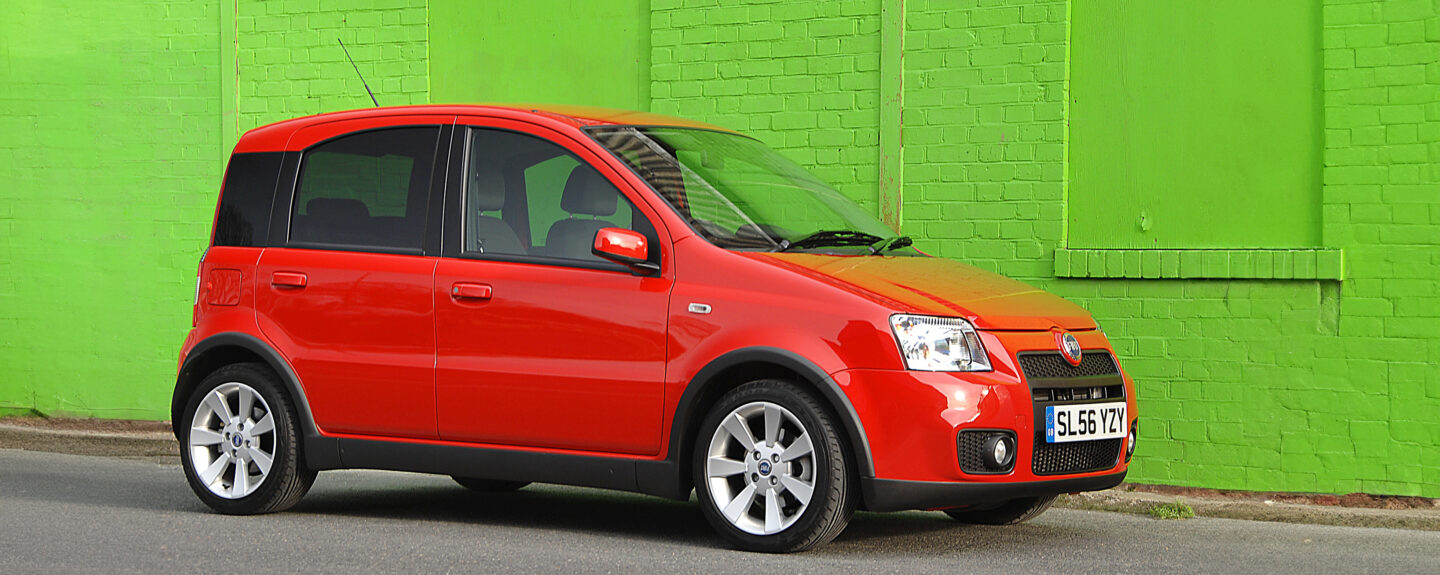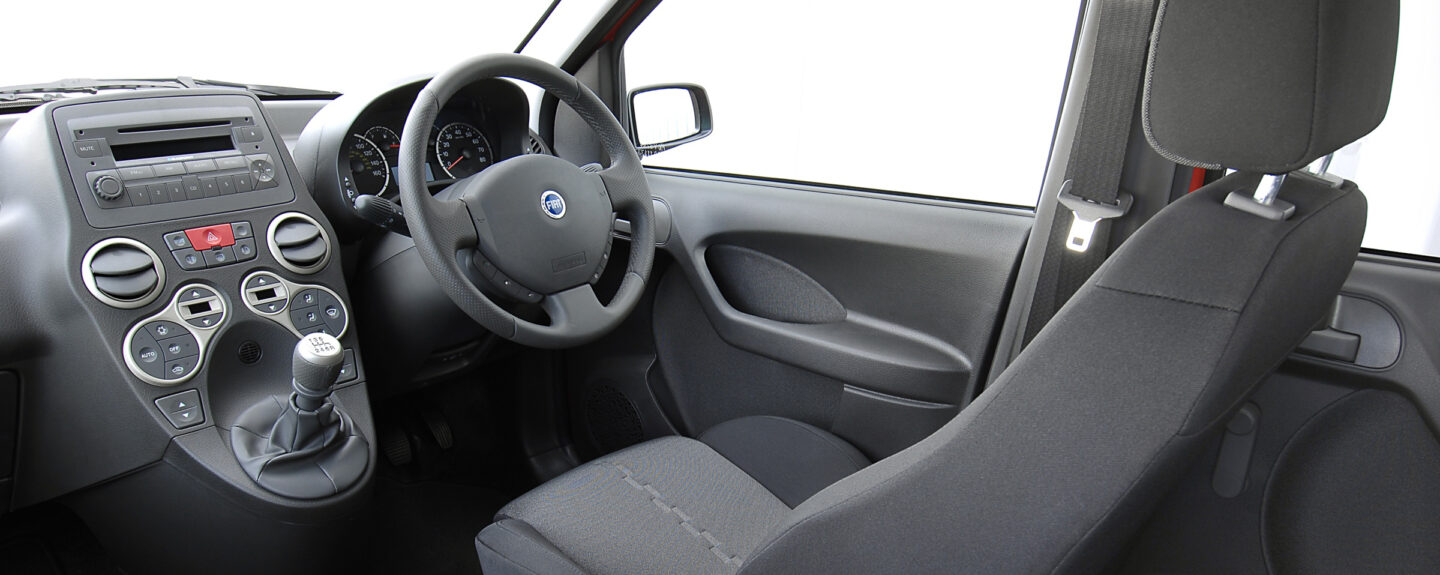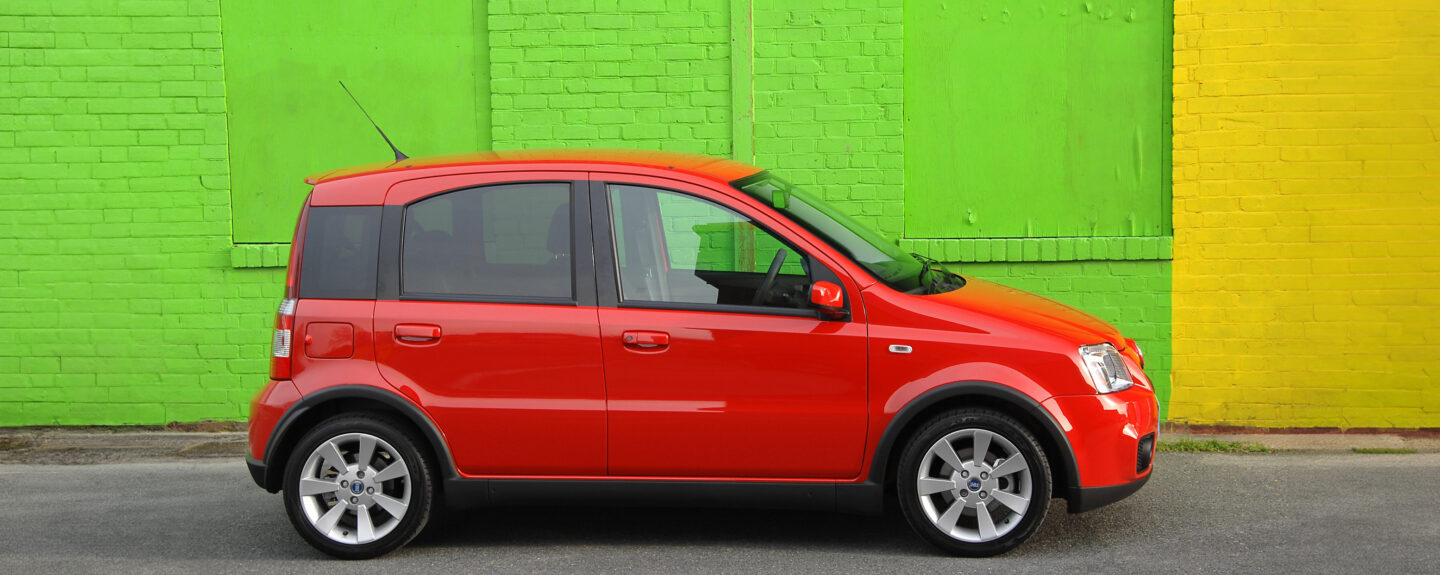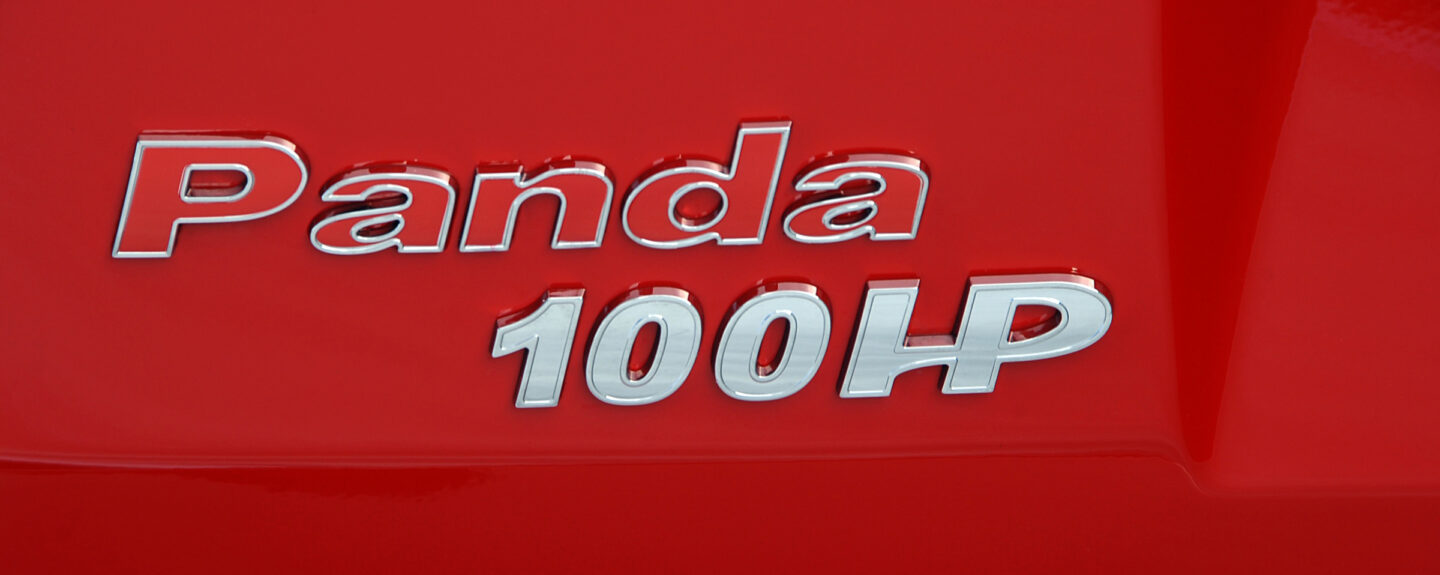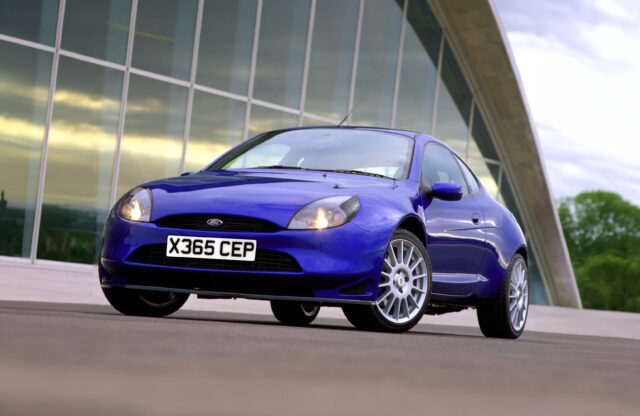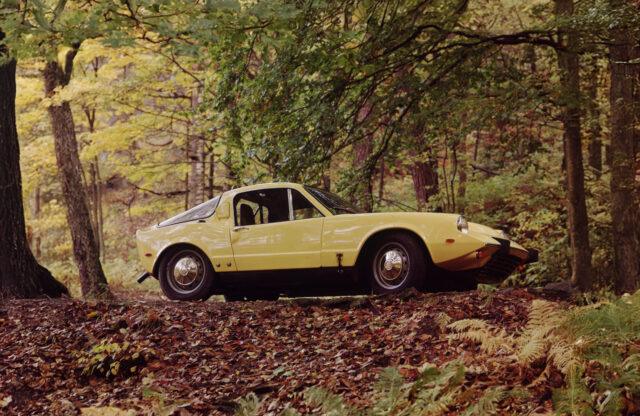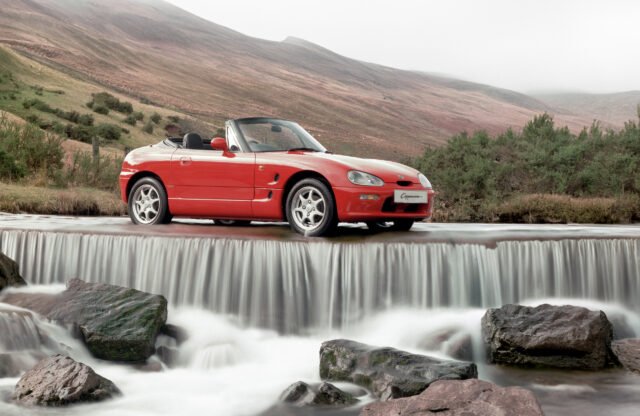Just how fast does a hatchback have to be before we consider it a hot hatch? I’ve always been of the opinion that it’s more about attitude than actual performance, as is perfectly demonstrated by such cars as the Peugeot 106 Rallye and VW Up GTI. Being small and light brings its own benefits and, in a world of increasingly bloated cars, driving something that weighs under a tonne is a joy. As the Fiat Panda 100HP proves, it can also be a bargain.
With a new price in the UK of £9995, it was an absolute bargain when it first went on sale, and was highly regarded by evo magazine as a genuine drivers’ car. Aside from some common foibles, running a 100HP is relatively straightforward and generally very cheap. Many owners report upwards of 40mpg on longer runs, and it’s even ULEZ-friendly. The Panda 100HP is in a category of smaller, lighter, low-power hot hatches that add up to more than the sum of their parts. Buy now and enjoy before they disappear into obscurity.
Fiat Panda 100HP history
Fiat finally replaced the original and much-loved Giugiaro-styled Panda in 2003 with this all-new model designed by Giuliano Biasio of Bertone, and built at Fiat’s Tychy plant in Poland. It was an instant city-car hit, even sweeping up the European Car of the Year award in 2004. In 2006, the range-topping 100HP appeared on the scene.
As the name suggests, it was powered by the 99bhp (100PS) 1.4-litre ‘FIRE’ engine previously seen in the larger Punto. This revvy, keen four-cylinder was paired with a relatively close-ratio six-speed manual gearbox, giving it a sprightly 0-60mph time of 9.5sec. It topped out at 115mph.
In order to turn the Panda into a proper mini-hot hatch, Fiat went all-out with the lowered suspension set-up. It was stiff, leading to some criticism that it was actually a little too bouncy on some of the UK’s rougher roads. Many examples will by now have had high-quality aftermarket replacement dampers, which calm it down somewhat.
While the regular Panda featured a City button on the dash – which made the steering lighter – the 100HP had a Sport button, which made the steering slightly heftier, as well as sharpening the throttle map. ESP was an optional extra, so not all 100HPs have it. Disc brakes were fitted at the rear, too, in place of the drum set-up of regular Pandas.
A true hot hatch needs cosmetic enhancements, and Fiat neatly transformed the Panda with a few small yet effective changes. Most noticeable is a deeper front bumper with fog lights and a large black grille – very much the style at the time. Black plastic wheelarches and side-skirts beefed up the looks too, with 15-inch alloy wheels neatly filling those ’arches. There’s a spoiler and a diffuser at the rear, and removal of the roof rails completes the visual package. A few were fitted with the optional ‘Pandamonium’ pack, which added red brake calipers, stripes, silver mirror caps and grey wheels. Fiat lifted the standard interior with a leather-rimmed steering wheel, silver dash trim and more supportive seats. It went off sale in 2010.
Fiat Panda 100HP common problems
• Timing belt tension needs to be checked every 36k miles, and the belt changed every five years. We’d suggest finding one with a fresh belt already fitted, or get it done yourself for peace of mind.
• Failed head gaskets are not uncommon, so check for warning signs. Regular coolant changes are a must.
• Suspension components are often tired, so expect to replenish springs, dampers and bushes if they’ve not been done.
• Poor wheel alignment is common, and leads to uneven tyre wear.
• The electric power steering can fail, so ensure it feels right on the test drive and that there are no warning lights.
• The interior was cheaply made; most suffer with worn seat bolsters and leather wheel, generally looking a little scruffy if not pampered.
What to pay?
Higher-mileage cars with a few issues can be found for under £1000, but as always you should tread carefully – they could end up costing you more than a lower-mileage car with a decent history. These start from around £2250, all the way up to £5000 for a mint, low-mileage example.
